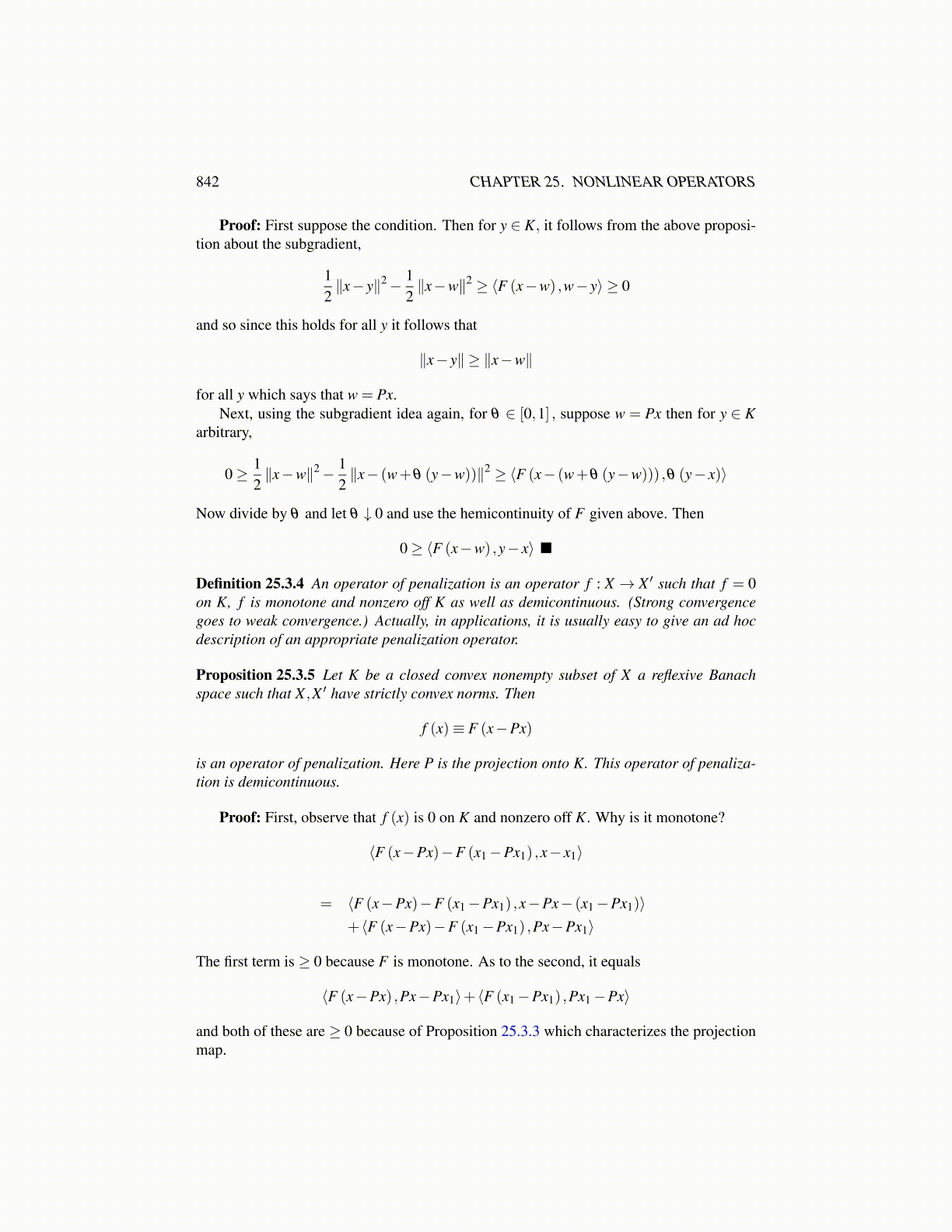
842 CHAPTER 25. NONLINEAR OPERATORS
Proof: First suppose the condition. Then for y ∈ K, it follows from the above proposi-tion about the subgradient,
12∥x− y∥2− 1
2∥x−w∥2 ≥ ⟨F (x−w) ,w− y⟩ ≥ 0
and so since this holds for all y it follows that
∥x− y∥ ≥ ∥x−w∥
for all y which says that w = Px.Next, using the subgradient idea again, for θ ∈ [0,1] , suppose w = Px then for y ∈ K
arbitrary,
0≥ 12∥x−w∥2− 1
2∥x− (w+θ (y−w))∥2 ≥ ⟨F (x− (w+θ (y−w))) ,θ (y− x)⟩
Now divide by θ and let θ ↓ 0 and use the hemicontinuity of F given above. Then
0≥ ⟨F (x−w) ,y− x⟩
Definition 25.3.4 An operator of penalization is an operator f : X → X ′ such that f = 0on K, f is monotone and nonzero off K as well as demicontinuous. (Strong convergencegoes to weak convergence.) Actually, in applications, it is usually easy to give an ad hocdescription of an appropriate penalization operator.
Proposition 25.3.5 Let K be a closed convex nonempty subset of X a reflexive Banachspace such that X ,X ′ have strictly convex norms. Then
f (x)≡ F (x−Px)
is an operator of penalization. Here P is the projection onto K. This operator of penaliza-tion is demicontinuous.
Proof: First, observe that f (x) is 0 on K and nonzero off K. Why is it monotone?
⟨F (x−Px)−F (x1−Px1) ,x− x1⟩
= ⟨F (x−Px)−F (x1−Px1) ,x−Px− (x1−Px1)⟩+⟨F (x−Px)−F (x1−Px1) ,Px−Px1⟩
The first term is ≥ 0 because F is monotone. As to the second, it equals
⟨F (x−Px) ,Px−Px1⟩+ ⟨F (x1−Px1) ,Px1−Px⟩
and both of these are ≥ 0 because of Proposition 25.3.3 which characterizes the projectionmap.